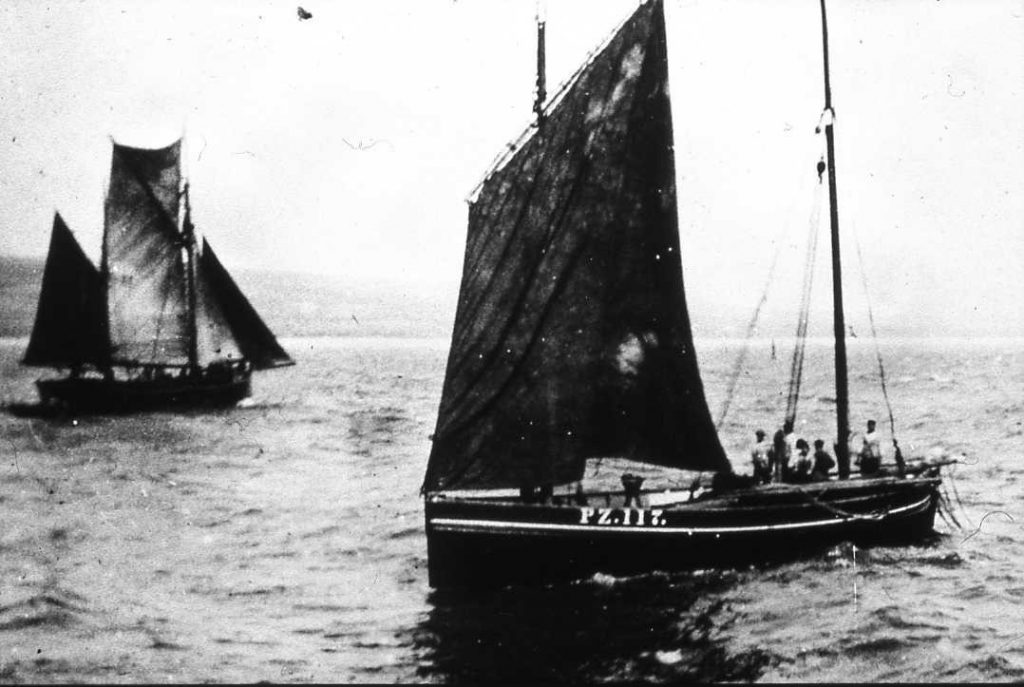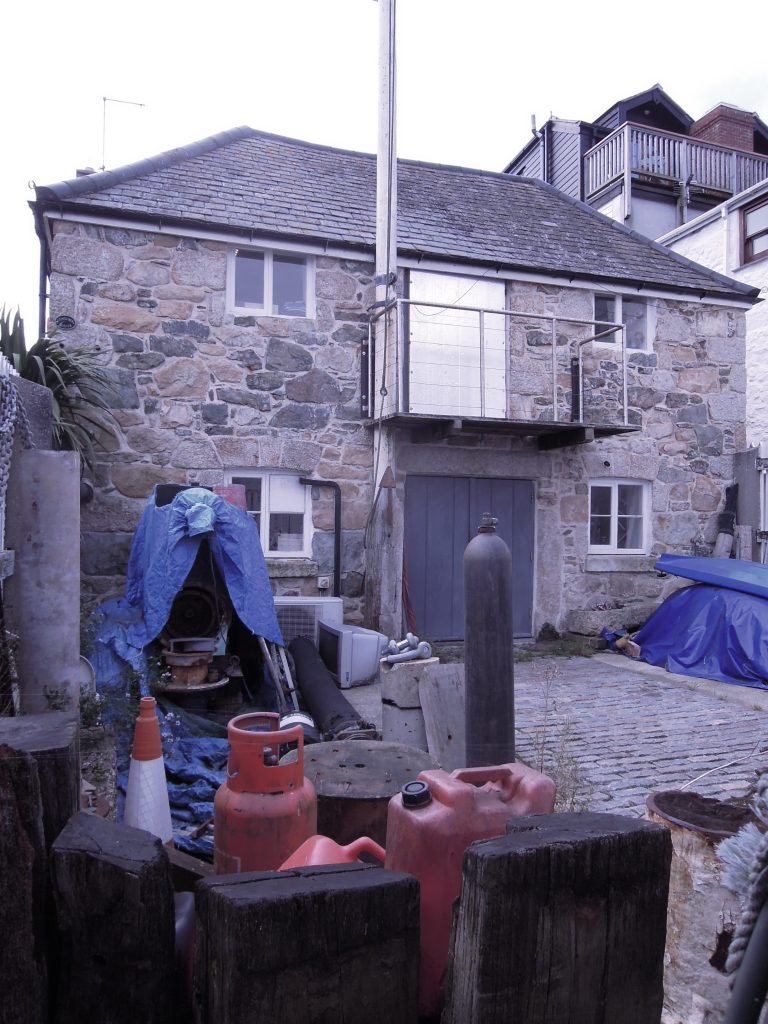
Penzance is the most westerly registration port for fishing boats, covering an area from roughly the Lizard around to Cape Cornwall. Luggers and latterly motor fishing vessels fished these stormy waters at risk of life and limb.
A number of photographs exist of these vessels and, with some detective work, these can be matched with entries in the registration books to create brief histories of the vessels concerned and the lives of the people who sailed in them.
Tony Pawlyn, himself a former trawlerman, has a unique collection of pictures and has compiled these stories.
Penzance sea-fishing boats have been a splendid obsession for most of my life. It all began with some old lantern-slides and prints of local fishing boats and harbours. I soon felt the need to be able to identify which boat was which, and while their names were not usually discernable in these photographs, their fishing numbers were. Most of the boats I was trying to identify carried ‘PZ’ numbers, however, it also soon became clear that the memories of the old Mousehole and Newlyn fishermen that I met, while vivid and full of character, were not particularly reliable as to which name went with any particular number – especially when it happened that many numbers were re-used several times for different boats over the years.
It soon became very clear that I needed a definitive source of information, and the only definitive sources, were the British Sea-fishing Boat Registers – in my case mostly for the Customs Port of Penzance
When I started on this quest these registers were still held locally in each Custom House.
The Registers of British Sea-fishing Boats, and British Vessels, were legal documents – essentially proof of ownership of property – which were held in the Custom House of the port of registry. They were maintained by one of the Customs officers – designated the Registrar. In so far as the Port of Penzance was concerned, the port limits extended from the Lizard around the harbours, creeks, and porths of Mount’s Bay, around the Land’s End to Cape Cornwall – with periodic bureaucratic variations.

So it was that the transcription of these registers has truly been a lifetime’s obsession, which I commenced in the early 1970’s, and is still not completed in 2019. After a bit of bureaucratic ping-pong I was eventually given permission by the Archivist at King’s Beam House, to work on the old registers. However, the old registers were not kept in the Long Room – as I had imagined- but were stacked in the loft, of the lower Custom House store.
This was the very yard where centuries before seized contraband had been lodged awaiting condemnation and sale. The whole place was steeped in Cornish maritime history – reeking of tar and hemp. Climbing the external stairs I would ensconce myself in the loft for many an hour, working through the half-dozen heavy ledgers comprising the Penzance Sea Fishing Boat Registers. There was very little furniture in the loft. Just one trestle table and a Victorian clerk’s high stool. Which had a sloping seat – if you could call it a seat – which you could lean against to take some weight off your legs, but gradually slid off if you tried to sit down. No matter. I was in my element. In a back-loft space, under a low gable roof, the old registers were stacked, along with a mass of other superseded Customs records, together with a World War Two air-raid warden’s helmet.
You must appreciate that this was long before the concept of digital photography, at a time when conventional photography was relatively expensive and out of the question. Portable audio cassette tape recorders were the latest technology, and microphone in hand, I set about working through the registers, reading the entries out loud recording the content for later transcription. I frequently stumbled over words, for which I would habitually apologise – causing my wife Valerie much hilarity when I later transcribed them – and frequently mis-spelt proper names, but I progressed. Initially I was only interested in the sailing luggers, so at that time I limited my abstractions to the earlier registers. But those days are now long gone.
Some years ago the Registrar General of Ships and Seamen offered the expired British registers to the various County Records Offices, and Cornwall Record Office accessioned the surviving ones for the ports of Falmouth, Fowey, Hayle, Looe, Padstow, Penzance, St. Ives and Truro – but here I will concentrate on Penzance.
While many are irretrievably missing, most extant British Sea Fishing Boat registers date from the implementation of the 1868 Sea Fisheries Act. There were previous registrations of fishing boats under the 1843 act (if not earlier) but few if any of these registers have survived. Certainly none are known to exist for the Port of Penzance, The 1843 convention of Port letters being the first and last letters of a port’s name led to some duplication. For example, both Poole and Penzance boats had numbers commencing with the letters ‘PE.’ While the general precept was still followed under the 1868 Act, provisions were made to avoid duplication, and the letters ‘PZ’ were introduced for Penzance. The 1868 legislation included strict rules for the marking of each class of boats with their fishing numbers, along with all their fishing gear. The relevant sections of this and subsequent Acts, dealing with the numbering of fishing boats and their gear, are reproduced as Appendix A.
Sea Fishing Boats were also grouped under three classifications notionally according to their tonnage burthen [internal capacity]. The relevant sections of the several Acts [post Customs Consolidation Act, 1876], relating to these classifications are also reproduced in Appendix A.
Tony Pawlyn, July 2019
